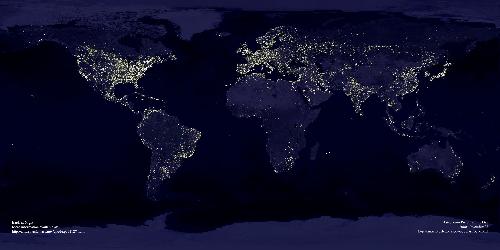Planetary Hot Spots
WATCH THIS CARD AS A VIDEO
The occurrence of this card may indicate a need to be in a place of power and vision and/or a place with high social opportunities, resources, and opportunities. British biologist James Lovelock (formerly with NASA) won a Nobel Prize for his Gaia Hypothesis that the earth functions as a superorganism. Complex organisms, like the human body, have highly differentiated structures. It is very different, for example, to have an ant crawl across a toenail than the cornea of your eye. The spherical body of Gaia has a differentiated structure as well, and some parts of its surface seem to be power spots comparable to acupuncture meridians or chakra locations on our bodies that are associated with energy vortices. Monument Valley is a place that should convince anyone with an ounce of sensitivity that power spots are real. In the last few days of his life, someone asked Timothy Leary what, now that he was at the edge of the grave, what he would advise people. He said, "Be careful where you film the movie of your life." Choose the part of the body of Gaia you live on as wisely as possible. Sometimes it's valuable to make a pilgrimage to a power spot or to relocate to one indefinitely. Other times, it may be ideal to make your own power spots on the imaginal plane within. Power spots may be places you go to for a time or where you choose to live. Power spots may be man-made sacred spaces such as Gothic cathedrals or pyramids, or they may be geologically powerful places like Monument Valley or the Grand Canyon. They may also be socially intensive temporary zones like festivals. I like to visit and to live in what I call "mutant-intensive environments." In plainer English, places where there are more individualized and culturally creative people. For example, I grew up in New York City, and now I live in Boulder, Colorado. These locations have more social opportunities, resources, and opportunities than, for example, a dying Rust Belt town. You are more likely to meet someone interesting at a temporary mutant-intensive environment like Burning Man or a Rainbow Gathering than at a random Walmart at 11:00 on a Monday morning. It's not only that certain festivals self-select more interesting people (mixed in with plenty of "drainbows" and trendy posers), but also that social boundaries are more open at festivals than at Walmarts. I've had a number of misanthropic friends tell me that they want to live in remote, rural areas to get away from people. I usually challenge them — "So where will the next significant relationship come from? And what if you have a medical catastrophe? Would you prefer to live close to state-of-the-art medical services or wait for a neighbor to drive you thirty miles in a pickup truck to the barber shop for emergency surgery?" These are all very personal choices. I don't see myself ever living in a big city like New York again, but I also don't want to self-isolate in the woods. Boulder is my Goldilocks zone, a geologically powerful high desert nestled beneath the Flatiron Mountains with glorious high-altitude lighting and ever-changing mountain weather. It's a major university and college town with lots of cultures, medical services, social opportunities, superb restaurants, and giant health-food stores. Unfortunately, like NYC, it has high rents and home prices. But you often get what you pay for with places these days. It's one of the things that makes "scenes" hard to come by. In the rare occasion that a place turns into a scene, it gets gentrified and expensive until more bohemian folks get priced out, and the scene vanishes. I got to live in an intense scene in the early to mid-Eighties — the East Village when it was the most intense art and music scene on the planet and the punk capital of the world. I lived in a tiny apartment that was $350 a month, and many punks squatted in abandoned buildings in Alphabet City. Then it gentrified, and the scene disappeared. New scenes popped up in Brooklyn until they got gentrified and moved to more affordable Brooklyn neighborhoods. The point is that mutant-intensive environments, especially festivals and scenes, are temporary zones, so you need to be mobile if you want to be part of them. Boulder is my home base, but in an ever-advancing age, I also spend 25% of the year on road trips and festivals, living out of my Sprinter van. Now, I'm fortunate enough to own a house in Boulder, but for more than twenty years, I was economically marginal as I split my time between Boulder being on the road and living out of an 18-foot RV. Try not to get stuck in stagnant, mediocre places lacking in social opportunities and other key resources. Consider this an auspicious time to seek out power spots. See Incendiary Person in the High Desert Carnival, a surreal travelogue of my first Burning Man Experience and also a study of the light and dark of festival culture.
Powerspots can be hard to take on in the abstract. Essential reading to see them embodied is my sci-fi epic, Parallel Journeys, which can be read free on this site. If you prefer Audible, Kindle or physical versions, those are all available on Amazon. Parallel Journeys includes geological powerspots, descriptions of the Rainbow Gathering and the East Village of the 80s and power spots in other dimensions. |
||||||||



